Many science teachers have classroom specimens (or pets) to serve as model organisms, to teach students how to care for animals, and to generally liven up the space. When I first started teaching, I inherited a room that had beautiful cabinets full of specimens preserved in formaldehyde.
I wanted a pet in that space because I didn’t want my biology students to associate the subject matter with only dead things, biology is the science of LIFE.
Over the years, I’ve had many pets in the classroom, most were donated to me by seniors who were leaving for college and some were purchased from pet stores, and some were wildlife rescues, like an American Toad that showed up on my back porch. (We kept Tubby over the winter and released him in the spring.
There are grants available for elementary teachers who want to keep pets in the classroom that may hep pay for some of the expenses. Check out Pets in the Classroom for details.
1. Bearded Dragon
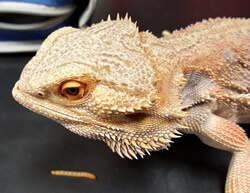
Pros: These reptiles start off small and juveniles can be difficult to handle. As adults, they are mellow and easy to care for, and do not mind being handled. They have a diverse diet and enjoy vegetables as well as crickets and meal worms. Meal worms are fairly easy to breed and can be used for science experiments.
Cons: Adult dragons do need a large habitat and they require expensive UV lights. They can become very sick without proper lighting and calcium supplements.
2. Leopard Gecko

Pros: Their small size makes them easy to keep in a small aquarium. They do need a heat source, but UV lights are optional. They are tame if they are handled regularly, and readily accept meal worms and crickets as food source. Leopard gecko substrate is inexpensive and the animal is not messy.
Cons: If stressed, they can drop their tails. It will grow back, but it will never quite look the same. I’ve had several that got eye infections, one of them ended up becoming blind and had to be hand fed. They will only eat live food. Some can be aggressive when young, but they usually get better with handling.

Pros: A popular and hardy aquarium fish. Feeder guppies are also very cheap. You can buy a handful of cheap feeders and then throw in a couple of “fancy” guppies. Guppies are live breeders, so your population will change. It’s a great way to talk about evolution, populations, and sexual selection.
Cons: Guppies can overpopulate a tank. Aquariums require equipment to set-up and maintain that might be expensive.
4. Corn Snake or King Snake
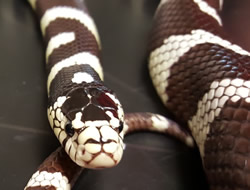
Pros: These snakes do not get as large as the more popular ball pythons or boas. They can be kept in a smaller habitat and are easy to handle. They can be fed small frozen mice.
Cons: Older snakes can become a little bit more aggressive and much larger, obtaining feeder mice or frozen mice can be difficult in some areas. Aggression issues can be managed by using separate feeding tanks.
5. Rats
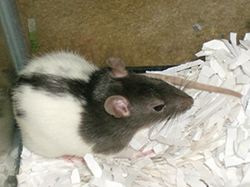
Pros: Most rats are good-natured and easy to handle. They come in several colors and even breeds and can even be trained to perform tricks.
Cons: They need a large habitat which also needs to be cleaned often. They can’t be litter box trained, so they often leave behind droppings when kids handle them. Rats are social animals and do better in pairs.
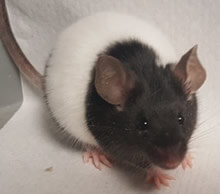
Pros: Similar to rats, only the smaller versions require less space.
Cons: Mice can be smelly, particularly the males of the species. Some mice can be a bit nippy, though I’ve noticed that most bites are more exploratory than aggressive.
7. Red Eared Slider
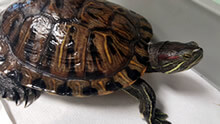
Pros: Students are fascinated with turtles. Many have never seen a turtle close up and these guys are very active swimmers and spend most of the day basking under the UV light. My turtles have also become conditioned to humans feeding them and often swim toward your hand to receive food.
Cons: They require a large aquarium with powerful filters to stay clean. They are not the kind of animal that can be handled by students. They will outgrow small aquariums.

Pros: Tortoises are also fascinating for kids. They can be gently handled and students can help with creating and maintaining the habitat. They don’t need to be in an aquarium and habitats can be built with wood and bricks. During the summer, you can even house the animals outside.
Cons: They don’t do well in aquariums, round turtles can get stressed in the corners of the glass cages and they don’t seem to understand the concept of glass. They like to borrow, so the enclosure needs sand or dirt for digging. Tortoises can be expensive to purchase. They live a long time (this could be a pro!)
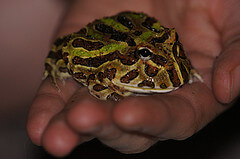
Pros: A nice representative of the amphibian class, and large enough to see features you might explain when talking about frogs (slimy skin, tympanic membrane, nictitating membrane.)
Cons: Live food required to feed these frogs (usually crickets). They like to burrow which can make them hard to view. They do have teeth and can bite.
10. Tarantula
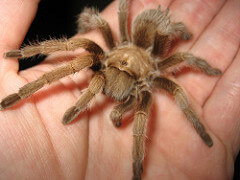
Pros: Having an animal in the room that kids consider “icky” is a great way to challenge those preconceived notions. The tarantula can also help students understand the difference between insects and spiders.
Cons: These spiders can bite, and handling should be done with extreme care. Their bite is not fatal but it will hurt (comparable to a bee sting.) I had an aggressive tarantula that was nice to look at, but students were not allowed to handle it.
Pets I Don’t Recommend
There are some pets I would not recommend in the classroom, mainly because they are too difficult to care for, too large, or just don’t do well in busy, loud classrooms. Many of your exotic mammals, such as sugar gliders and hedgehogs really have demanding nutritional needs and become stressed easily. Sugar gliders cannot be left alone over the weekend because they must be fed fresh foods daily.
Some reptiles grow to large sizes that can also make it difficult to keep up with their habitat and feeding needs. Large snakes will require large food, such as mice and rats and some will not accept frozen food. Check with the pet store before buying one.
Hamsters are popular pets because they are cheap and small, but they sleep most of the day and can bite when they are startled. They are also escape artists, and easy to lose.
Guinea pigs (cavy) are lovely pets but I have mixed feelings about them in the classroom. They really do require a lot of space and ideally should be housed in pairs, as they are social animals. For the same reason, I’d be cautious about adopting bunnies into the classroom.

